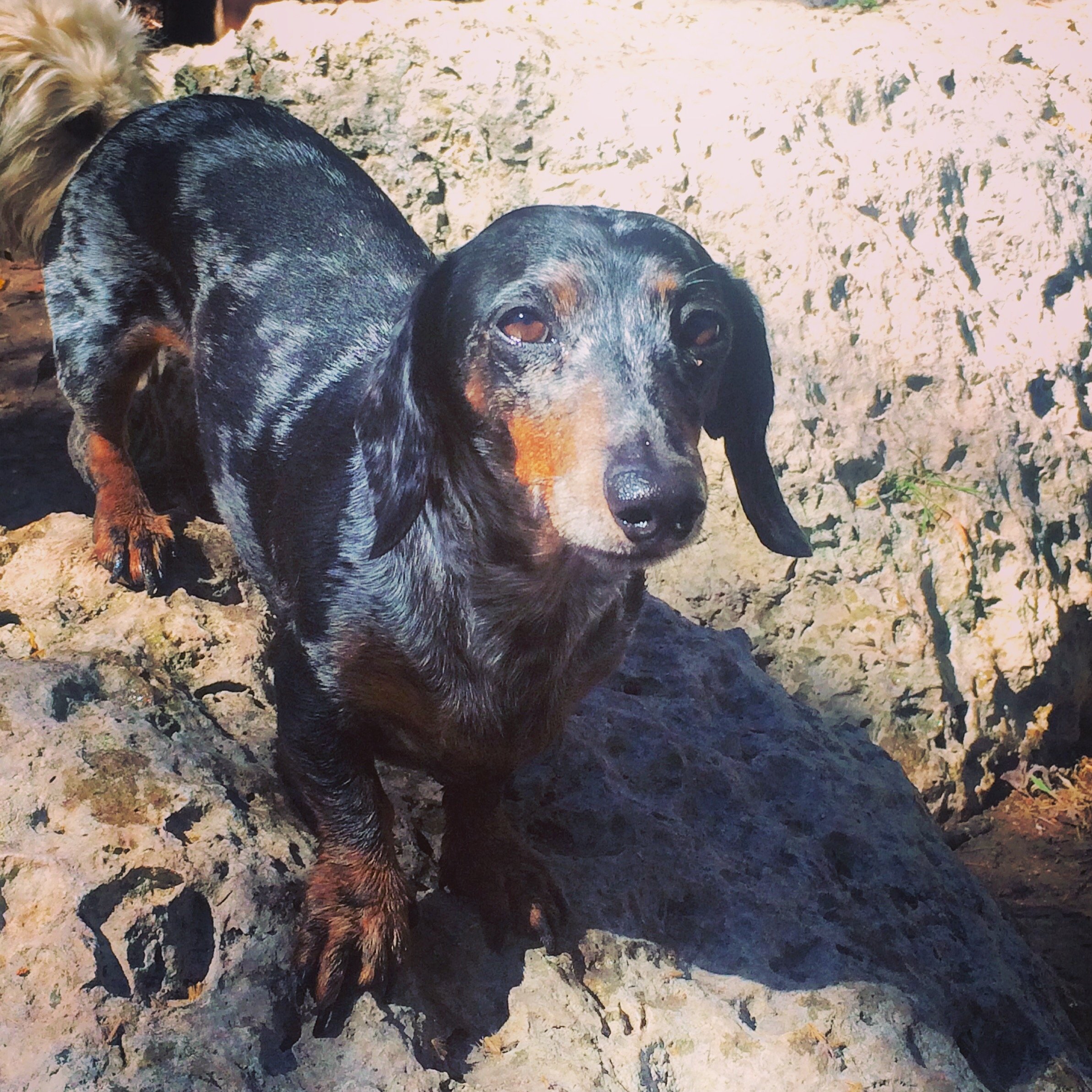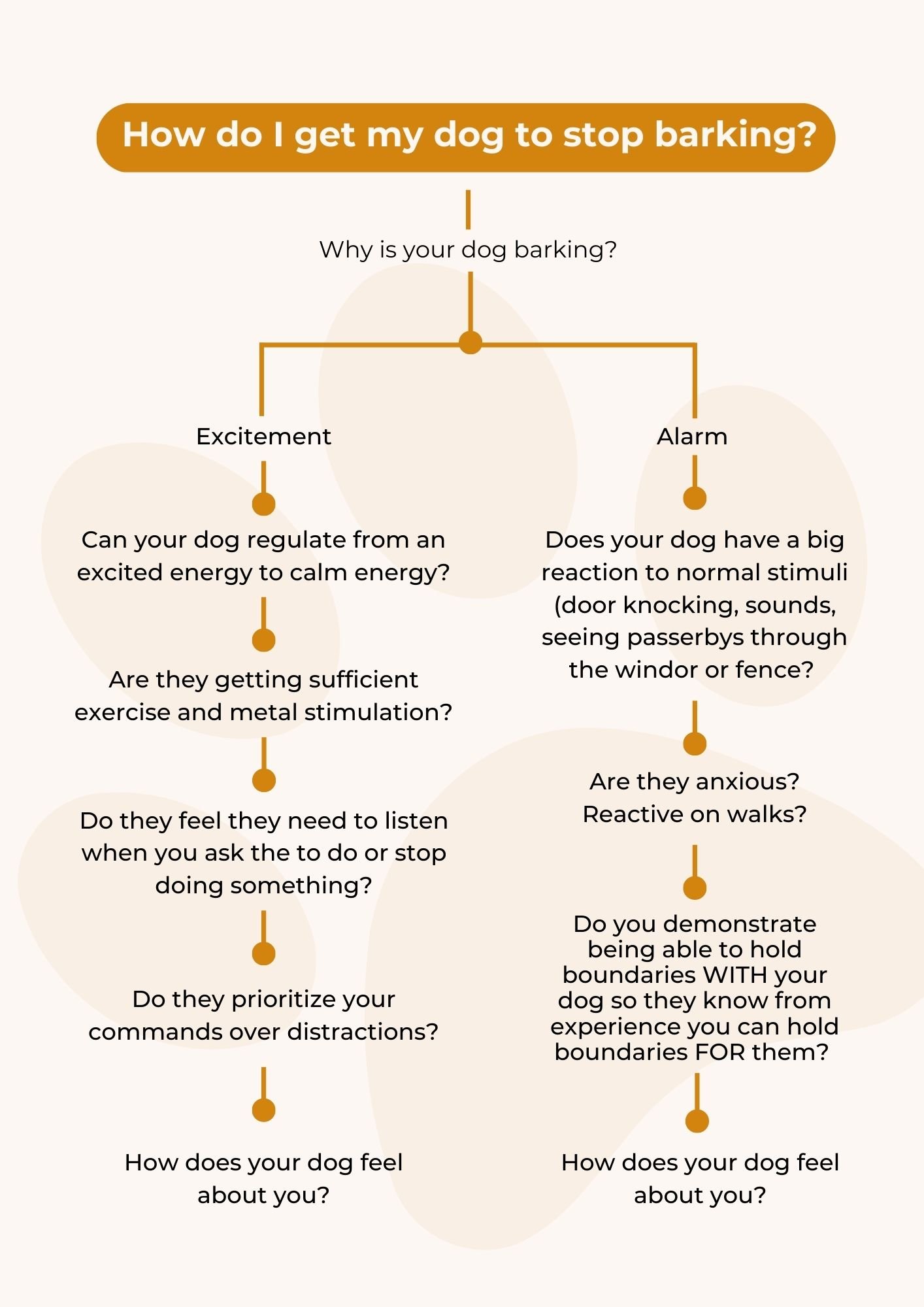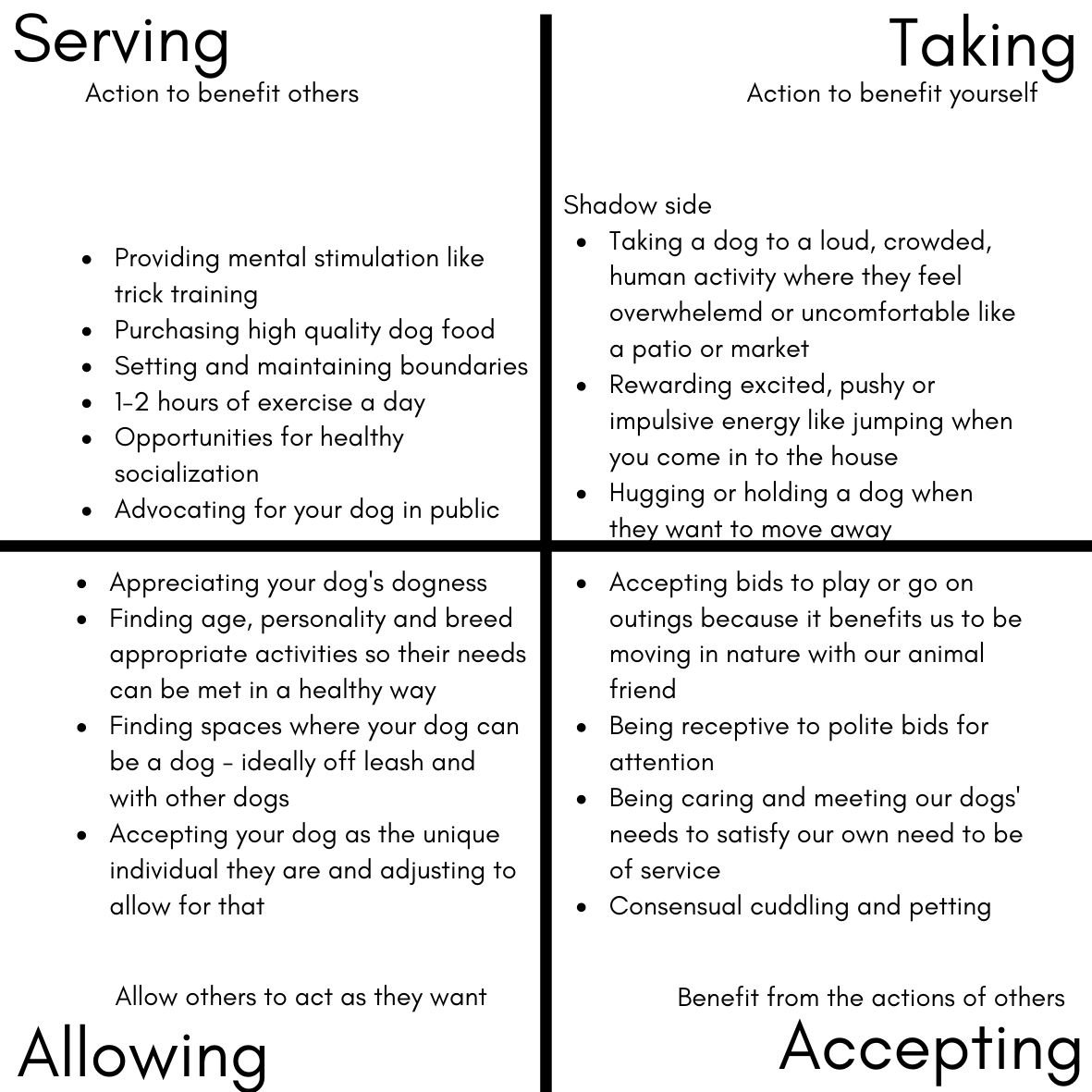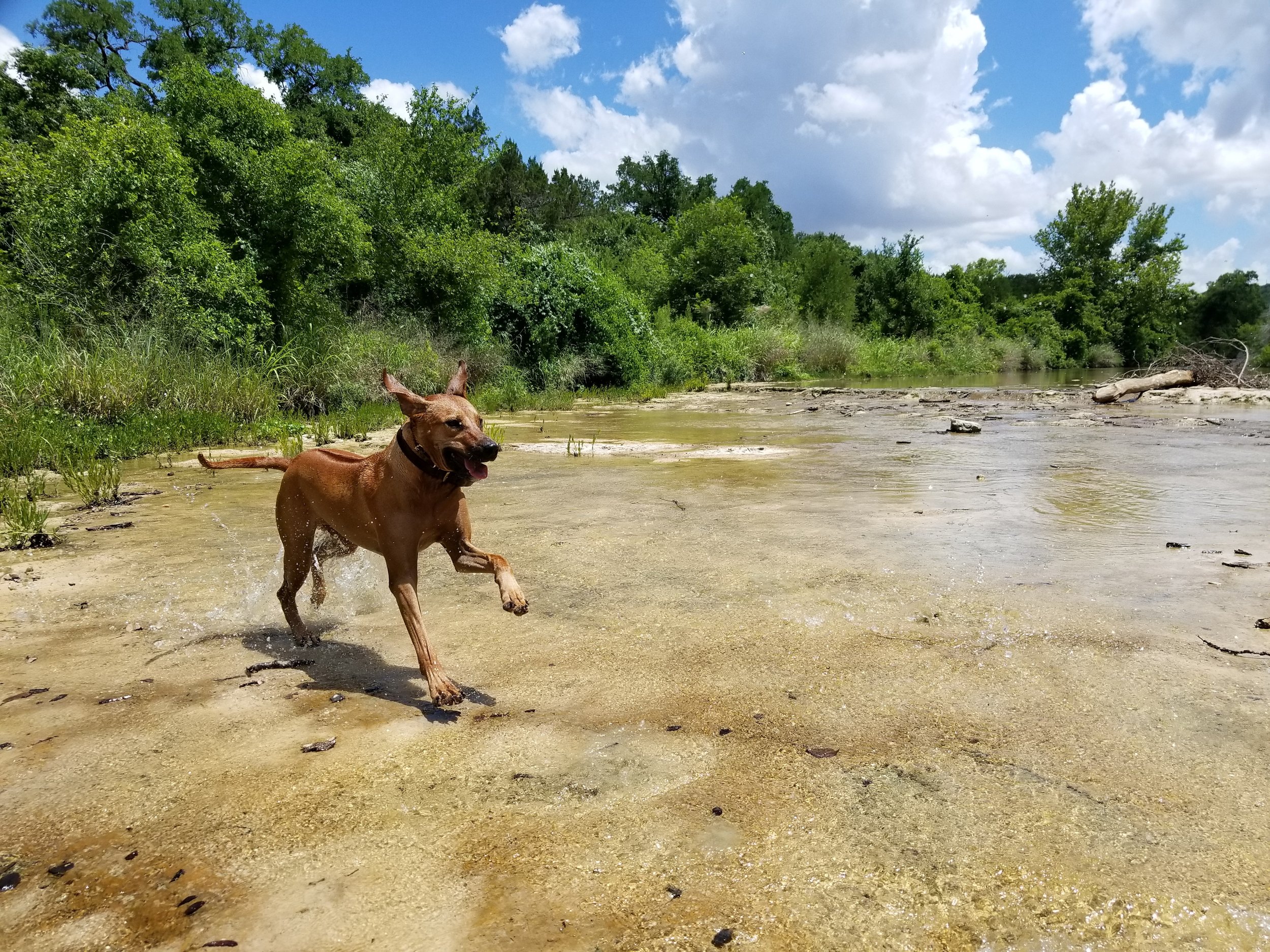The number one challenge for dog owners is knowing what their problem is!
After 10 years of owning my business I can tell you that when people call me for help with their dog, they are calling because their dog is doing something that annoys, frustrates, scares or confuses them enough to go through the trouble of reaching out for help and be willing to invest both their energy and money in professional guidance.
The behavior in question is what they see as their problem, but really that behavior is the most obvious or annoying expression of what their dog’s problem actually is, which usually boils down to how our dog’s feel about us.
How do I know?
This was definitely true for me and I even studied dog training before I got a dog. After getting bitten by a dog in 2011, my miniature Dachshund Harley developed fear based reactivity. She was so afraid of another dog hurting her that, in an effort to appear formidable to prevent another attack, she was causing other dogs to respond to her in the exact way she didn’t want them to.
“A behavior that arises from trauma creates the exact outcome it was designed to avoid.”
This is true for us humans, too. Harley’s fear was coloring her life. She felt it every time a dog approached her and in that activated mindset she couldn’t be present and properly evaluate the dog she was greeting. Every dog was the dog that bit her.
Every greeting was her chance to go back into the past and change the outcome.
Every time she tried to do that, the thing she was afraid of happened again.
I knew this behavior was a HUGE problem, especially when I was apprenticing under another trainer and working with her client’s dogs, but I was frozen.
I didn’t know how to fix it and…
It was going to be a huge undertaking.
I didn’t really want things to change in other areas of her life.
I didn’t understand what her problem really was…
I thought the problem was greetings or other dogs because that is where the action was, but I discovered the root of her problem was how she felt about me.
Even though I studied dog training with two other trainers right before and after I got Harley, I read books, I watched dog training TV shows and I spent a ton of time around dogs, no one talked to me about how dogs saw the world or what they really needed from their owners in order to feel safe in the world. Despite my efforts to educate myself I was just like every other owner, seeing and relating to my dog the way movies and pop culture shows. I had no idea that there was another relationship happening between us in dog language, a relationship in which I, the best dog owner in the world, was fully and completely letting my dog down.
Let’s Talk About Barking
Barking is a common complaint so it’s the example I use most often.
“My dog bark at other dogs on the walk or while playing”
“My dog barks at every little sound at home”
“My dog won’t stop barking when people come over”
Barking dogs have become very common, but that behavior, when compulsive, isn’t normal. Barking isn’t a dog’s way of “talking.” They talk with their energy body language and behavior. Barking is a stress response more than a method of communication.
I notice that the question is usually “how do I get my dog to stop barking?” because barking is the annoying behavior, but very few owners ask “why is my dog barking?” which is the more interesting question for me. Let’s compare barking to having a persistent or reoccurring rash. “How do I get my dog to stop” is like asking what kind of bandaid to put on the rash when we need to find out what is causing it!
Dogs usually bark for two reasons. Either they are excited and can’t manage the intensity of that mental state so the energy comes out of their mouth as a bark or they feel unsafe and are alarm barking, trying to use their bark to alert to the presence of a threat as a deterrent so the threat goes away.
Let’s break down both of those reasons to find the cause.
Excitement
Dogs commonly bark during exciting moments, like:
when there is a knock on the door and they know someone is about to come in
when you come home
when they want something
when they are about to get something they want
when they are playing… to name a few
Let’s compare barking out of excitement to us yelling in exciting moments. It’s appropriate at a sports game or during a round of applause. Maybe a shriek or squeal will come out of our mouths if something very good happens, especially if it’s a surprise. As adults we know when it’s appropriate to yell and we are able to stop when that moment passes or if someone indicates to us that we need to. If we were to keep yelling at that point there would be social consequences ranging from dirty looks to someone pulling you aside and escalating right up to you getting committed or arrested.
I’m not saying ALL BARKING IS BAD or DOGS SHOULD NEVER BARK. Barking is a natural response and can be appropriate. My dog barked her whole life, especially if the door bell rang, and that was totally okay and normal. My rule for barking is that a dog has to stop when I ask them to - which my dog did. For most dog owners, that is not possible at all or not reliable across situations and stimulations.
So, your dog is barking out of excitement and can’t stop when you give a verbal command, a leash cue, or even when you approach them menacingly demanding the behavior stop immediately.
Why?
Regulation
Most of our dogs struggle to regulate from an excited energy to a calm one. This is because we love their excitement and are more likely to exacerbate it then to try to mitigate, contain, or disincentivize it. We see a dog’s excitement as an expression of joy and a signal that we have done something very right as a dog owner. This is a loving moment for us, a joy of dog ownership, perhaps even an expression of our subconscious wish fulfillment to be as full of joy and free in it’s expression. We love a dog’s excitement… right up until we hate it.
Most dog owners will only ask a dog to calm down when their behavior becomes problematic. This is the equivalent of putting out a fire over and over when really we need to be working to prevent fires or make sure they only happen in the fireplace and can be easily extinguished whenever needed.
Because we don’t regularly ask a dog to calm down, especially in the everyday, usually at home, happy loving moments where we don’t need them to, our dog’s literally don’t know how to! The number one cause of dog problems today is the inability to regulate their energy or mentality. They don’t know how to go from an excited state to a calm one because we haven’t shown them the way in the quiet moments where long term learning is actually possible. I cover this in lesson 4 of my eCourse and touch on some of the concepts in my article on the “wait” command.
Basic needs
If a dog knows how to regulate, but can’t they may not be getting enough exercise or mental stimulation. Like kids who are asked to sit in class all day long with no gym, recess, lunch or art class, our dogs, who spend 90% of their day home alone or passively interacting with us, our dogs may be drunk on energy. They know what we are asking. They theoretically can do it, but they can’t control themselves in that moment because they have more energy than self control. If we don’t move our dog’s energy in ways we want it to move, it will move in ways we don’t like, like barking, chewing, digging, pulling and zooming around the house. To many of you that may seem like a list of dog behaviors, but if a dog’s needs are being met they won’t do any of those behaviors at home, and certainly not to excess. Each dog needs X amount of exercise each day in order to be a good companion. Experiment with different amounts of time, activities and intensity levels to find out what X is for your dog and make sure to get them out for X + 5 every single day.
Obedience
Body language of a calm dog
I actually don’t use this word very often in my training because I don’t want a subservient, submissive slave that bends to my will or whim. I think more about having a great teammate who trusts me and listens to me because they know that I love them and want them to have an amazing life. In order to get there your dog has to know that their life will become increasingly “unfun” anytime they ignore you - not just when it really matters. In order to have a dog that listens to us we need to know how to communicate clearly (lesson 3 in my eCourse) and how to BE someone our dogs are naturally inclined to listen to (lessons 2 and 5). Building the integrity we need to have dogs that listen to us means giving clear commands and setting small boundaries often at home, where we are in control of a familiar environment with few distractions. Your dog can’t listen to you when there is something going on if they can’t listen to you when there isn’t.
You vs the world
It’s AMAZING if your dog listens to you 99% of the time at home, but that doesn’t help if they blow you off the moment you leave the house. Many of us move too far, too fast with our dogs, taking them out to do the things that '“dogs can do” without first taking the time to build the kind of mindset that dogs who can do it (well) have!
In order to save my dog’s life I need to know that I can give a command at any moment and my dog will listen OR that I know exactly what to do to get them to listen if they don’t. Most owners allow all the fun stuff without worrying about the listening part because it takes time and effort to achieve. Owners often cheat by only letting their dog off leash in fenced areas where it “doesn’t matter” if the dog doesn’t have recall without realizing that every single time they call their dog and there is no consequence for ignoring the command they are cementing a dangerous behavioral norm and relationship dynamic that could truly bite them in the ass one day.
The bar is also devastatingly low. It feels like it’s almost more common to see a dog ignoring their owner’s “come” command than listening to it. If your dog doesn’t listen to your command, that is a sign that you are somewhere you don’t belong and it’s time to immediately change the situation (go on leash if off, leave the park, lower the distractions on a walk by staying closer to home, or working in the yard or house instead of outside). There is no shame in going backwards in your training trajectory!! The truly problematic choice would be staying where your dog is telling you you don’t belong.
How does your dog feel about you?
Let’s find out after we talk through alarm barking.
Alarm
Alarm barking is a normal behavior for dogs and a natural way for them to both signal others that there is a potential threat as well as to deter the threat by showing that someone is present and paying attention. Any “natural” behavior when done to excess in frequency or duration becomes “unnatural” and barking is a perfect example of this.
Reaction vs Reactive
While it’s normal for your dog to have a reaction to certain sounds or stimuli, reactions are appropriate in their timing and duration. If a dog is having a reaction, they can usually be redirected relatively easily. The behavior becomes “reactive” when it happens often, inappropriately, and the dog quickly becomes so stimulated that they are “out of control,” meaning that you have to physically stop them because they are unable to process or respond to your verbal commands. Reactivity is a question of “can you regulate from an excited state to a calm one” as well as “do you trust my assessment of this situation and are therefore willing to be influenced by me in it?” Check out this article on reactivity for more.
Safety
Many of us know that our lives are safe, so we don’t consider what safety means to a dog. In order for a dog to feel safe they need to know that someone they trust and respect, who is better suited than they are for the job of protecting the house and ‘pack,’ is paying attention. We don’t know that dog’s need this (or that most of our behavior complaints are rooted in this basic need) so we accidentally live a life where we convince our dogs, in their language, that THEY are responsible for US. If you are wondering why there are so many reactive dogs today, this is the answer.
When we:
Body language of an over stimulated dog
Allow dogs free rein of the house and access to furniture
Let them push into us, lean on us, paw at us, follow us or even to enter our personal space bubble when excited or without checking in
Don’t follow through on commands
Encourage disregulated mindsets or reward the ensuing behavior
Don’t consistently and reliably enforce boundaries
Provide more love than structure… our dogs see us as someone they can push around and are therefore responsible for protecting.
OOPS! That is literally how everyone’s life with their dog looks - mine included before I learned what I now teach. Think about it like this. If we lived together and you were rude to me, bossed me around, won every argument and ignored my requests, would you trust me to step up and protect or defend you? Would you think that I could identify and appropriately respond to a threat? Would you even like me very much? No, no and probably not, honestly.
It isn’t fair to only ask how to ‘get a dog to stop barking’ without addressing why they feel they have to bark, and that means looking more deeply into our relationship.
So, how does your dog feel about you?
At the root cause of both expressions of the barking behavior is how our dogs feel about us. Unfortunately, most of our dogs don’t think very highly of us.
We don’t understand dog culture so we don’t know how to:
earn our dog’s trust and respect
demonstrate that we are aware of and managing a potential threat
teach our dogs to regulate from an excited mental state to a calm one
follow through on our commands to build integrity in our dogs’ eyes
Because we don’t understand how dogs perceive and respond to the environment or miss out on their early alert cues, it’s hard for us to know how and when to step in either to prevent the behavior or to correct it. But that isn’t all it’s about…. we have to become someone dogs are naturally inclined to listen to.
I bet you didn’t think changing how you show up to your dog and how they see you and view your relationship would be the answer to “how do I get my dog to stop barking” did you? Turns out it is the answer to almost every training question I get asked! This dynamic - how your dog sees you, how they view your relationship, and how that makes them feel about the world means EVERYTHING when it comes to giving our dogs a great life.
Back to Harley
Her fear based reactivity was about to get me fired and I had to do something. I wish I could say that I noticed there was a problem and immediately dropped everything to do whatever it took to change it, but that wasn’t true. I did my best to manage it. I half assedly tried some training techniques. I avoided those situations if possible. I mostly just watched it happened and downplayed it in my mind because I didn’t want to do an overhaul of our lives together. The trainers gave me a book, some instructions and an ultimatum. Fix it or she can’t come around anymore.
And they were right to do that.
During this time (a period I call ‘bootcamp’ for my clients because I ask them to follow as many of my recommendations as possible as thoroughly as possible for 6-8 weeks minimum) I:
added a lot of rules and boundaries to our life together
took away any and all privileges
reeled back my affection and attention
became clearer with my commands
asked for TONS of regulation and impulse inhibition
created structure in every interaction and activity
I also had to do a lot of emotional work. I pulled back the tendrils of the intense love I felt for my dog and reground in the core of my own being. If I couldn’t stand on my own, how could I stand up for her? Luckily I was doing this work with Harley at the same time I was in a 12 step program, because the concept of god, the support of the community and the framework for introspection in processing my past and clearing the way for a new future were all essential parts of the inner work that dog training suddenly required. I had to look at why I was so heavily invested in and emotionally dependent on my dog for her sake, because as I moved through the training process I learned that my dog’s biggest problem was actually me.
What now?
If you want to address your dog’s problematic behaviors, whether barking, reactivity, separation anxiety, social challenges or excitement, check out my free resources, my Online Learning Programs and my Virtual Coaching Packages to learn how I changed who I was, how my dog saw me, and how we started to move through the world so we could not only resolve her reactivity, but also have the amazing life and beautiful bond that we did.

















